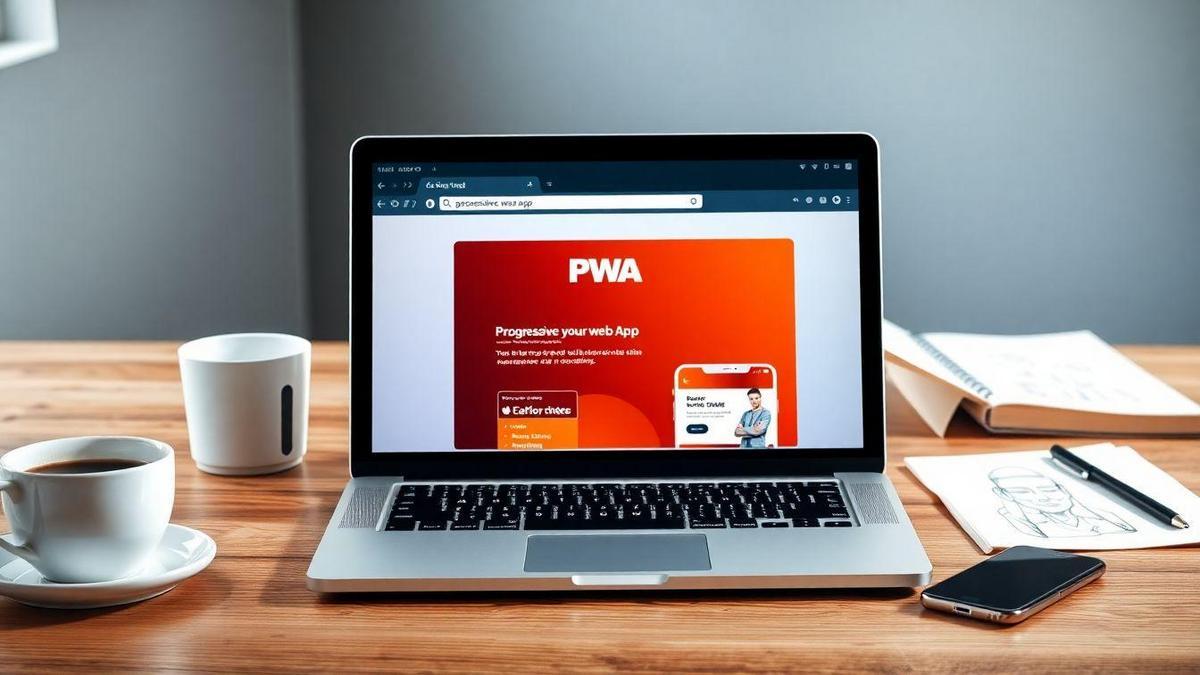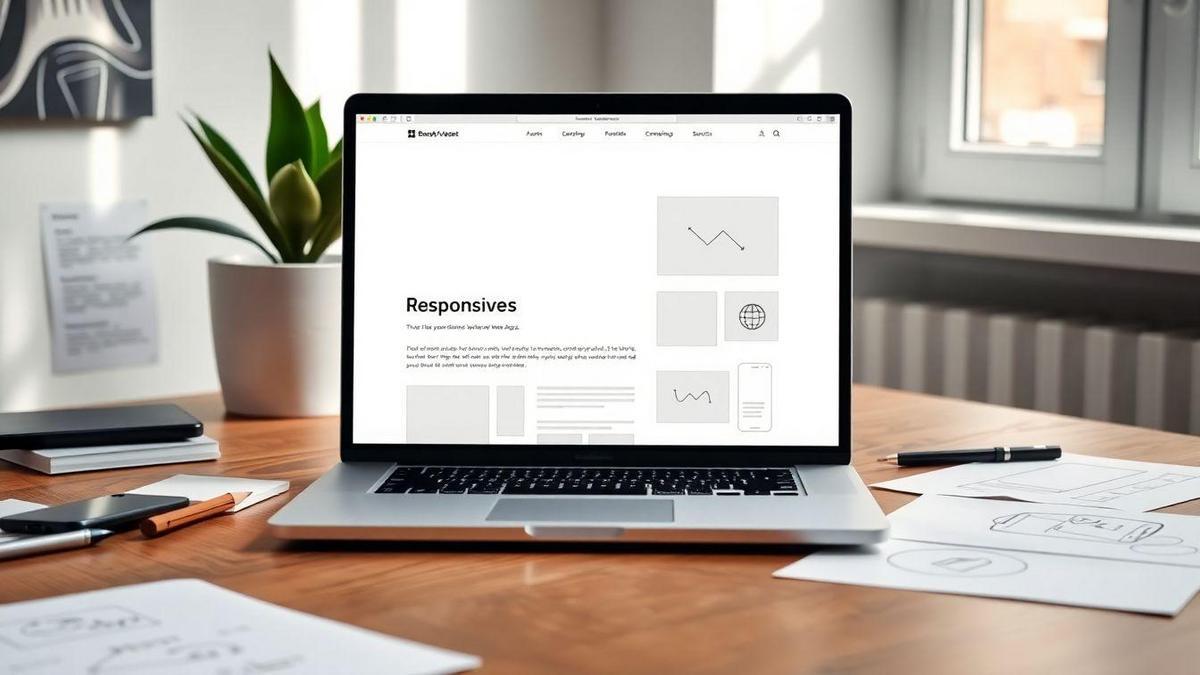PWA – Progressive Web Apps: What They Are and How to Create Them is your guide to understanding the exciting world of PWA. Are you curious how these apps work? You’ll learn their key features, why they’re better than traditional apps, and how they can boost your business. Plus, we’ll dive into the importance of user experience and explore the amazing offline capabilities of PWAs. Whether you’re a creator or a user, there’s something here for everyone, including real-world success stories and the best tips for building your own PWA. Let’s get started!

Understanding PWA – Progressive Web Apps: What They Are
Key Features of PWA
Progressive Web Apps (PWAs) are like a bridge between websites and mobile apps. They bring together the best of both worlds. Here are some key features that make PWAs stand out:
- Offline Access: PWAs can work without an internet connection, allowing you to use them even when you’re offline.
- Responsive Design: They look great on any device, whether you’re on your phone, tablet, or desktop.
- Fast Loading Times: PWAs load quickly, providing a smooth experience. No more waiting around!
- Push Notifications: Like a regular app, PWAs can send notifications to keep you updated.
- Easy Installation: You can add a PWA to your home screen without going through an app store.
How PWA Differs from Traditional Apps
You might be wondering how PWAs differ from traditional apps. Here’s a simple breakdown:
| Feature | PWA | Traditional Apps |
|---|---|---|
| Installation | Directly from browser | Through app stores |
| Updates | Automatic and seamless | Manual updates required |
| Storage Space | Minimal | Can take up a lot of space |
| Accessibility | Works on any device | Platform-specific |
| Internet Requirement | Can work offline | Usually needs internet |
As you can see, PWAs offer a lot of flexibility and convenience compared to traditional apps.
The Importance of User Experience in PWA
User experience is crucial for any app, and PWAs are no different. A great user experience means you can easily find what you need and enjoy using the app. Here’s why it matters:
- Engagement: If a PWA is easy to use, you’ll want to come back. A positive experience keeps you engaged.
- Speed: Fast loading times mean you won’t get frustrated waiting. You’ll have a smooth ride!
- Accessibility: PWAs can reach more people because they work on various devices, opening doors for everyone.
In short, a strong focus on user experience makes PWAs a hit with users. It’s all about making your life easier and more enjoyable.
Benefits of PWA – Progressive Web Apps for Your Business
Cost-Effective Development with PWA
When it comes to building an online presence, you want to keep costs low without sacrificing quality. That’s where PWA – Progressive Web Apps come into play. They are a cost-effective solution for your business. Instead of developing separate apps for iOS and Android, a PWA works across all devices with just one codebase. This means you save time and money on development.
Here’s a quick comparison of costs:
| Development Type | Cost Estimate |
|---|---|
| Native Apps (iOS Android) | $50,000 – $150,000 |
| PWA | $10,000 – $30,000 |
With a PWA, you can reach more users without breaking the bank. It’s like getting the best of both worlds!
Increased User Engagement through PWA
User engagement is essential in today’s digital landscape. A PWA can help you keep users glued to your site. Think about it: they load quickly, work offline, and can even send push notifications. This means your users can interact with your content whenever they want, even without an internet connection!
Here are a few ways PWAs boost engagement:
- Fast Loading Times: Nobody likes waiting. PWAs load quickly, keeping users happy.
- Offline Access: Users can browse even when they’re not connected. Talk about convenience!
- Push Notifications: You can send updates directly to users, encouraging them to return.
Real-World Success Stories of PWA Implementation
Let’s look at some real-life examples of businesses that have embraced PWAs and reaped the benefits:
- Twitter Lite: This version of Twitter is a PWA that loads quickly and uses less data. It has increased user engagement by 75%! Users are spending more time on the platform, and that’s a win.
- Alibaba: The online shopping giant saw a 76% increase in conversions after switching to a PWA. Shoppers love the fast experience and easy access.
- Pinterest: After launching their PWA, Pinterest reported a 60% increase in engagement. Users are pinning more and exploring the platform like never before.
These examples show that investing in a PWA can lead to higher engagement and better conversion rates for your business.

How to Create PWA – Progressive Web Apps Step by Step
Creating a Progressive Web App (PWA) can feel like a journey, but with the right tools and practices, you can navigate it smoothly. So, let’s dive into how you can create your very own PWA!
Essential Tools for PWA Development
To kick things off, you’ll need some essential tools. Here’s a handy table to help you out:
| Tool | Purpose |
|---|---|
| Text Editor | Write your code (like Visual Studio Code) |
| Node.js | Run your JavaScript on the server |
| Web App Manifest | Describe your app’s settings |
| Service Workers | Handle offline functionality |
These tools will help you build a PWA that works seamlessly on any device.
Best Practices for Creating PWA
When building your PWA, keep these best practices in mind:
- Responsive Design: Make sure your app looks good on all devices.
- Fast Loading: Users love speed! Optimize images and code.
- Offline Capability: Use service workers to cache content for offline use.
- App-like Experience: Make navigation and interactions feel smooth and native.
These tips will help you create an engaging app that users will love.
Testing Your PWA for Optimal Performance
Testing is crucial! Here’s how to ensure your PWA performs well:
- Use Lighthouse: This tool audits your app for performance, accessibility, and best practices.
- Check Responsiveness: Test on different devices and screen sizes.
- Simulate Offline Mode: Turn off your internet and see if your PWA still works.
By testing thoroughly, you can catch issues before users do, making your PWA even better.
Offline Capabilities of PWA – Progressive Web Apps
How Offline Functionality Works
When you think about Progressive Web Apps (PWAs), one of the coolest features is their offline capability. So, how does this magic happen? Well, it’s all about something called a Service Worker. This is like a helpful assistant that runs in the background, even when you’re not using the app. It saves important bits of data from the internet, so when you go offline, you can still access what you need.
Here’s a simple way to understand it:
| Step | What Happens |
|---|---|
| 1 | You visit a PWA for the first time. |
| 2 | The Service Worker saves data. |
| 3 | You lose internet connection. |
| 4 | You still use the app with saved data! |
Enhancing User Experience with Offline Access
Imagine you’re on a train, and suddenly, the signal drops. If you’re using a PWA, you don’t have to panic. You can still look at your favorite articles, check your to-do list, or even play a game. This offline access makes your experience smooth and stress-free.
Having offline capabilities means you can:
- Stay productive: Finish tasks without worrying about connectivity.
- Access content anytime: Read or use the app even in remote areas.
- Save data: Use less mobile data since you’re accessing saved information.
Examples of Offline Use Cases in PWA
Now, let’s look at some real-life examples of how offline capabilities can be handy:
- News Apps: You can read articles saved from earlier, even without the internet.
- Shopping Carts: Add items to your cart while offline, and they’ll sync once you’re back online.
- To-Do Lists: Jot down tasks anytime, and they’ll update when you reconnect.
In short, PWAs are like having a reliable friend who’s always there, even when the Wi-Fi isn’t!

Responsive Design in PWA – Progressive Web Apps
Why Responsive Design Matters
Responsive design is crucial for Progressive Web Apps (PWAs). It means your app looks good and works well on any device, whether it’s a smartphone, tablet, or desktop. Imagine trying to use a site that’s all squished on your phone or too big on your computer. Frustrating, right?
With responsive design, you create a smooth experience for your users. They can easily navigate your app without any hiccups. This not only keeps them happy but also encourages them to return. Plus, search engines love responsive sites, which can help boost your visibility online.
Techniques for Achieving Responsive Design in PWA
There are several ways to make your PWA responsive. Here are some key techniques you can use:
- Flexible Grids: Use a grid system that adjusts based on the screen size. This way, your content flows nicely, no matter the device.
- Media Queries: These are like special rules for your app. They let you change styles based on the device’s screen size. For example, you can make text bigger on a phone to improve readability.
- Fluid Images: Ensure your images resize as needed. This keeps your layout intact and prevents images from overflowing.
Here’s a simple table to summarize these techniques:
| Technique | Description |
|---|---|
| Flexible Grids | Grids that adjust to screen size |
| Media Queries | CSS rules that change styles based on device size |
| Fluid Images | Images that resize automatically |
Tools to Help You Create a Responsive PWA
Creating a responsive PWA can be easier with the right tools. Here are a few you might find helpful:
- Bootstrap: This is a popular framework that helps you design responsive apps quickly. It has pre-made components that are easy to customize.
- Google Chrome DevTools: This built-in tool allows you to test how your app looks on different devices. You can adjust settings and see changes in real time.
- Figma: A design tool that helps you create and prototype your app. It allows you to visualize how your app will look on various screens.
By using these tools, you can save time and create a more polished product.
Comparing Web App vs Native App: The Role of PWA
When it comes to choosing between a web app and a native app, you might feel like you’re standing at a crossroads. Let’s break it down and see how Progressive Web Apps (PWA) fit into the picture.
Advantages of PWA Over Native Apps
PWAs bring a lot to the table. Here are some key perks you might want to consider:
- Cross-Platform Compatibility: With PWAs, you don’t have to worry about different operating systems. They work on any device with a browser. That means you can reach more users without building separate apps for iOS and Android.
- No Installation Required: Users can access your PWA right from their web browser. They don’t need to download anything, which can lead to higher engagement.
- Offline Access: PWAs can work offline or in low-connectivity situations. This means users can still access your app even when they don’t have a strong internet connection.
- Automatic Updates: Forget about users having to update their apps manually. PWAs update automatically, so everyone always has the latest version.
Limitations of Native Apps Compared to PWA
While native apps have their strengths, they come with some downsides when compared to PWAs:
| Aspect | Native Apps | PWAs |
|---|---|---|
| Installation | Requires download and storage | No installation needed |
| Cross-Platform | Separate versions for each OS | Works on any device |
| Offline Functionality | Limited offline capabilities | Full offline access |
| Updates | Manual updates required | Automatic updates |
Making the Right Choice for Your Project: PWA or Native App?
Choosing between a PWA and a native app really depends on your needs. If you want to reach a wider audience without the hassle of multiple versions, a PWA might be the way to go. However, if you need access to device features like camera or GPS, a native app could be your best bet.
In the end, think about your target audience and what they need. A PWA could be a game-changer for your project, especially if you’re looking to engage users without the barriers of traditional apps.
Frequently Asked Questions
What is a PWA – Progressive Web App?
A PWA is a website that feels like an app. It loads fast, works offline, and can be added to your home screen. It’s a mix of the best web and mobile app features.
How do I create a PWA – Progressive Web App?
You start with a website. Then, you add a service worker and a web app manifest. These tools help make your site function like an app!
What are the benefits of using a PWA – Progressive Web App?
You get faster loading times, offline access, and a better user experience. Plus, they’re easy to update! Your users will love how quickly they work.
Can a PWA – Progressive Web App work on any device?
Yes! PWAs work on smartphones, tablets, and desktops. They adapt to fit any screen size. That means everyone can use them.
Do I need coding skills to create a PWA – Progressive Web App?
Basic coding skills help, but you don’t need to be an expert. There are many tools and tutorials out there to guide you. Just dive in!

Lucas is a technical SEO expert who has optimized over 200 websites and managed Google AdSense and Ad Manager campaigns since 2016. At ReviewWebmaster.com, he shares strategies to boost organic traffic and monetize every single visit.
Types of articles he writes:
-
“How to Increase Your Blog’s RPM with Simple Tweaks”
-
“Technical SEO Checklist for WordPress Sites”
-
“Complete Beginner’s Guide to Google Ad Manager”
Why it works:
Lucas brings a confident, analytical, and performance-driven voice to the site — perfect for readers looking for actionable, results-oriented content.
